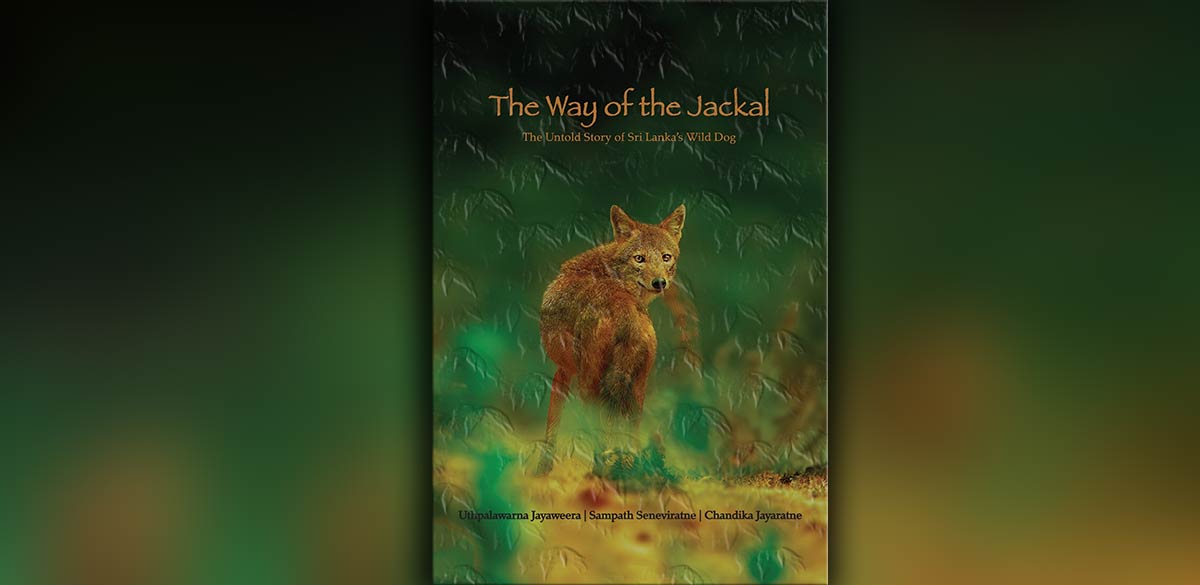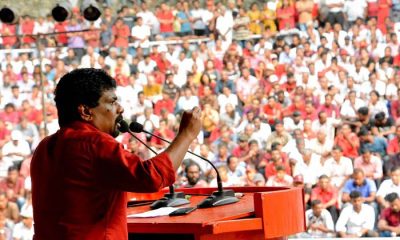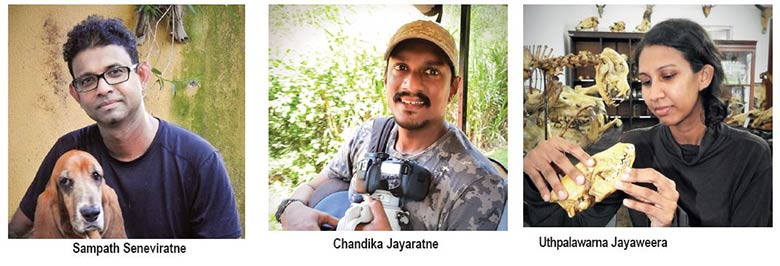Features
Iran after Raisi

By Uditha Devapriya
At the time of his death on May 19, in a helicopter crash that has yet to be fully investigated, Iranian President Ebrahim Raisi had risen through the ranks. Sanctioned by the West and nicknamed the “Butcher of Tehran” for his uncompromising attitude to protesters, he was seen as the successor to Iran’s Supreme Leader Ayatollah Khamenei. Under his watch Iran went through some pretty turbulent times, including a spate of protests in 2021 following the death in custody of a 22-year-old woman. But it also saw through a transformation in its foreign relations, signalling an outreach to Asia and the Global South.
Raisi’s death raises speculation about what will follow in Iran. He had been virtually groomed for succession after Khamenei’s death. Under him, Iran became more conservative, one could say less tolerant of dissent. But he also raised the country’s profile in the Global South, joining the Shanghai Cooperation Organisation (SCO) and becoming a member of BRICS. External developments, including of course the Russia-Ukraine War and the Israel-Gaza War, reinforced its links with not just Russia and China, but also India.
Donald Trump’s unilateral abrogation of the US-Iran nuclear agreement signalled to Tehran that the US could not be trusted. Joe Biden’s silent manoeuvres following his election – he became president around the same time Raisi did in Iran – did little to mend the damage. What Western analysts miss out in their commentaries on the deal and its subsequent breakdown is that the Iranian government could not be forced to buy the agreement: it would accept it only if the deal could be sold to hardline conservative elements. Trump’s belligerence more or less made it impossible to do so.
Then there was the COVID-19 pandemic. With the restoration of Western sanctions, Iran’s health sector came to a screeching halt. Rather than doing what any superpower capable of a great many things would have done, which is relaxing sanctions, Washington chose to continue them. Analysts who pontificate on human rights violations in Iran – which are real, as they are in countries like ours – ignore the hatred of the West that spread across Iran because of US policies. Ebrahim Raisi’s tenure should be seen in light of these developments, even if, as reports indicate, certain Iranians did celebrate his death.
How exactly has the country responded to the death of their president? The truth is that we don’t know. Any open celebration of his passing will almost certainly be censored and suppressed. But more than one Western media outlet has taken a handful of incidents as representative of the mood across the country. This is debatable.
On the other hand, it is plausible that many protesters are celebrating the fact that Raisi will not succeed Khameini. Yet even considering this, it is questionable whether, as one protester puts it, “The death of Raisi has made the people of Iran very happy.”
The bottom line is that Iranian society, with or without Raisi, cannot be understood without a wider understanding of its modern history, specifically the geopolitical intrigues which shaped the theocratic State to what it is today. From the 1953 CIA-sponsored coup to the Revolution, from the Iran-Iraq War to the sabotage of Iran’s nuclear programme, Western officials and analysts seem to have short memories. Iranian politics today is a consequence of these developments, just as American politics today is a consequence of the polarisations which have grown in American society since 9/11.
In 2009, at the height of protests against then President Mahmoud Ahmedinejad, the Iranian historian Ervand Abrahamian noted that, despite the many criticisms one could make of it, the Islamic Republic had withstood Western pressure for three full decades. Dismissing four commonly cited reasons for this – the numerous cleric-sponsored reigns of terror, the Iran-Iraq War, oil revenues, and the appeal of Shi’ism – he argued that Iran had been able to continue the way it has because of the clerics’ ability to appropriate the populist rhetoric of the radical intelligentsia minus their secular cosmopolitanism.
Critics of the Islamic Republic tend to consider pre-1979 Iranian society as having been qualitatively better for citizens in general and women in particular. But this would be like claiming that Russia before Stalin and the Bolsheviks was better for all. Iran under the Shah was oppressive and authoritarian. The 1979 Revolution, not unlike the aragalaya in Sri Lanka, drew in every political group opposed to the Shah. For a while, this movement became dominated by radical-secular progressives. Raisi figured in among the Islamists who usurped the progressives while advocating for a more egalitarian social order. In this, they succeeded beyond expectations; as Abrahamian points out,
“In three decades, the regime has come close to eliminating illiteracy among the post-revolutionary generations, reducing the overall rate from 53 percent to 15 percent. The rate among women has fallen from 65 percent to 20 percent. The state has increased the number of students enrolled in primary schools from 4,768,000 to 5,700,000, in secondary schools from 2.1 million to over 7.6 million, in technical schools from 201,000 to 509,000, and in universities from 154,000 to over 1.5 million. The percentage of women in university student populations has gone up from 30 percent to 62 percent.”
The situation has improved steadily since then. World Bank data, for instance, show a rise in youth female literacy from 66 percent in 1985 to 99 percent in 2022. This underlies perhaps the most enduring paradox in Iranian society today, its concurrent entrenchment of social welfare and religious conservatism, especially in relation to women. Such paradoxes cannot be understood without reference to the 1953 coup, which sowed among Islamist groups a perpetual suspicion of the West and put those groups in the same league as radical anti-imperialist progressives. And they cannot be resolved by resorting to the typical Western solution of Colour Revolutions and Arab Springs.
For these reasons, Raisi’s death hasn’t actually led to a fluttering of hope among Western analysts. The consensus seems to be that his death will do nothing to stall the further Islamisation of Iranian society, and that he will be succeeded by an even more conservative and anti-Western leader. Meanwhile, the world order, specifically in the Global South, is changing so fast that Western narratives no longer cut it.
With or without Raisi, there is unlikely to be a revival of the Obama nuclear agreement, notwithstanding Joe Biden’s gestures. That was a one-hit wonder which did little to assuage Islamist fears of the West or the American right’s deep-seated Islamophobia. In itself, it was not a failure. But like all such initiatives, it was ultimately doomed to failure. Raisi’s tenure marked a heightening of tensions with the West in general, and the US in particular, in light of its abrogation. This will continue, for a long time.
Uditha Devapriya is a writer, researcher, and analyst based in Sri Lanka who contributes to a number of publications on topics such as history, art and culture, politics, and foreign policy. He can be reached at .
Features
Provincialising universities: Risks and dangerous precedent of NEPF

by Nalaka Samaraweera
The new National Education Policy Framework (NEPF), currently being implemented by the government, has begun to be noticed by the public. However, there is a noticeable absence of an in-depth discussion on the implications of the policies it proposes. So far critics have quite convincingly pointed out the neoliberal motives behind the proposals and the threat that it poses to the longstanding tradition of free education in Sri Lanka. These criticisms hold merit, as the compilers of the framework have failed to present any moral stance, such as a commitment to social justice and equity, within the document.
An equally critical yet less emphasised aspect is the devolution agenda of the policy framers, who have aggressively pursued the decentralisation of educational powers beyond the provisions of the current Constitution. It is evident that their efforts are deliberate and explicit; they have unequivocally embraced the ‘Principle of Subsidiarity,’ challenging the unitary status of Sri Lanka. This principle was first introduced in Sri Lankan constitutional history during the attempted drafting of a new Constitution by the ‘Yahapalana‘ government in 2016 receiving severe criticism for undermining the country’s unitary status.
Strangely, the NEPF framers have adopted the same principle despite the nation’s continuing adherence to the unitary status. It appears that the NEPF framers disregard the necessity for policies to align with the Constitution, as evident from the multiple recommendations that violate the provisions of the 13th Amendment. For instance, the NEPF recommends stripping the government of the right to establish universities, conferring that authority exclusively upon provincial administrations.
Additionally, it suggests categorising existing universities as “provincial universities.” This recommendation contradicts the Constitution, which defines the establishment of universities as a concurrent task shared by both the central and provincial governments. Moreover, it has been recommended that the Provincial Boards of Education, entrusted with the advisory function by the Constitution, be granted autonomy by the NEPF.
It is further recommended to replace the University Grant Commission (UGC), the apex body of higher education, with a new entity called the National Higher Education Commission, whose role is to be limited to maintaining academic standards adhering to the national policies. As a result, the Provincial Boards of Education take on the roles of establishing, coordinating, and maintaining universities, thereby challenging the existing centralised authority over these responsibilities.
The framers are doubtlessly intent on fully devolving higher education in the country to a degree that surpasses even India’s model, where the Union Government shares the powers with states to establish, coordinate and maintain universities. What’s actually concerning is their daring attempt to decentralise higher education not by directly amending the Constitution, but by manipulating education policy decisions, which is both unconstitutional and unethical.
What could be the consequences of this attempt with regard to universities? So far, universities have featured in national political mandates with promises to increase the number of institutions and student enrollment, driven by a sense of national interest beyond regional and ethnic considerations. However, if universities are transformed into “Provincial Universities” and become focal points in provincial election campaigns, these campaigns may emphasise regional sentiments. When local politicians view universities primarily as tools to serve their regional constituencies, they are likely to undermine the national significance of these vital institutions. This shift challenges the current equitable approach, which strives to serve the national interest without regard to regional or ethnic differences.
The NEPF aims to replace the UGC and transfer the responsibility of funding universities to respective provinces, posing a significant threat to university autonomy. If provincial bodies gain authority to fund universities while heavily relying on government funding, we can expect increased corruption and deficiencies. Local politicians are likely to prioritise regional sentiments. Additionally, there is no assurance that all universities will receive equitable treatment, as their affiliations with different provinces may lead to disparities.
It was not long ago that there was a media report of a politician sending a letter to the top authority of a university, advocating for the recruitment of a specific individual as a lecturer. If this is happening even when universities are buffered by the UGC from direct political interference, the situation could worsen if they fall under the oversight of the proposed autonomous Provincial Educational Board. There is no doubt that this board would be influenced by provincial political dynamics. Imagine a scenario where the Provincial Chief Minister appoints the Vice Chancellor of the “Provincial University.” In this scenario, provincial politicians might view universities as potential employment hubs for their constituents.
It is no secret that there is an infamous demand for the further division of existing provinces along ethnic lines in this country. In this context, if ethnicity-focused groups see universities as instruments for promoting ethnic and religious interests rather than fostering a cohesive national identity, the country will lose its ability to create a unified national ethos. It is inevitable that universities will become victims of regional and ethnic political maneuvering.
Why are the framers of the NEPF persisting in this unconstitutional endeavour? Why haven’t they opted to pursue amendments to the Constitution for their intended devolution through proper channels? Perhaps, they are leveraging this for future constitutional amendments when the political climate is favourable to such endeavours. The public is strongly urged to remain vigilant regarding potential future constitutional changes, as the irreversible damage they may cause has been well documented.
It is important to note that Sri Lanka, unlike India, does not accept provincial autonomy in principle due to its unitary status. If there is a need to delegate certain powers, be it legislative, administrative, or financial, it must be approved by Parliament. In this context, I would like to pose a fundamental question: What is the rationale behind provincialising universities? Put differently, do specific provincial needs and conditions warrant such a recommendation in the Sri Lankan context? Is there any need for distinct higher educational programmes to cater to unique requirements in provinces? If it is posed more concretely, do provinces have unique industrial and manufacturing activities that demand tailored engineering and managerial degree programmes specific to the province for example? To the best of our knowledge, no one has been able to demonstrate such distinct requirements. Authorities need to remember that the rationale behind devolving power should stem from logical arguments rather than merely pleasing certain groups for future political gains.
Let the people be urged to unite in opposing the NEPF, which will set a dangerous precedent by surpassing the provisions outlined in the Sri Lankan Constitution. Failure to do so would lead to a precedent of devolving power through policy manipulations, without amending the Constitution.
(The writer is a Senior Lecturer, University of Moratuwa. Views expressed in this article are personal.)
Features
AI, climate control,and Buddhism

By Rohana R. Wasala
Addressing a gathering as chief guest at the 100th anniversary celebration of the Sri Lanka Buddhist Society Moratuwa held at the Moratuwa Buddhist Society Hall on May 11, 2024, President Ranil Wickremesinghe pledged Rs. 1 billion for research to ‘explore the connection between Buddha’s teachings and AI’ starting next year as The Island (Online) reported 13 May, 2024. He revealed that though the project was scheduled to start this year, it had to be deferred for lack of legal provisions for the regulation of Artificial Intelligence (AI). The programme will go ahead once new laws are adopted by parliament, he assured. The President also said that the government would provide the funds required for the restoration of the Moratuwa Buddhist Society Hall ahead of its own first centenary in 2029 (The construction of the building was completed in 1929).
The president’s determination to exploit AI for the global promotion of Theravada Buddhism was first mooted in a statement he made as guest of honour at the inaugural function held at the Edward Stadium in Matale, a day ahead of the 73rd National Upasampada Maha Vinaya Karma of the Ramanna Nikaya, which was to be conducted at a venue in Bandarapola, Matale from July 20 to 27, 2023. Video. Before commenting on this ludicrous subject of a costly programme of research on a hypothetical relationship between Buddhism and AI, an obvious case of comparing apples and oranges, let me turn to what else the president said at Moratuwa.
President Wickremasinghe laid similar emphasis on the global issue/s of climate change involving atmospheric warming and worsening water scarcity, both currently experienced in Sri Lanka. He thought that these challenges are to be met in accordance with the teachings of the Buddha. His arbitrary assertion in this connection is that, in terms of the Buddha’s teachings, ‘this issue’ (of climate change) ‘stems from civilisation’s greed for rapid progress’. The president would have been more convincing in making this claim (if he actually did so, as reported) had he mentioned the particular discourse or context where the Buddha allegedly talked about climate change. Since the president didn’t do so, his audience probably took him at face value. I, for one, don’t think that Buddhism offers any answers to climate change issues. The Buddha never claimed omniscience regarding the physical world, world-systems, or universes (cakkavala/chakravata in Pali and Sanskrit respectively, and sakvala in Sinha), which he said is achintya, meaning surpassing human thought, inconceivable, an idea modern physicists accept).
The subject of ‘loka’ or the world (there’s a special definition of the word ‘loka’ in Buddhism) is beyond thought (Sin. loka vishaya achintyayi). Gautama Buddha was the world’s first exponent of what is today known as the scientific method, which is important in any field where identifying and solving problems are involved, including climate control. He used it for discovering the Four Noble Truths about human existence: the reality of the unsatisfactoriness of samsaric journeying, its causes, the possibility of stopping that aimless wandering, and the way to achieve the cessation of the endless cycle of repeated reincarnations that is full of ‘dukkha’ or suffering. This goal has to be reached through wisdom while practicing universal love and compassion (lovingkindness) over all sentient beings.
‘Buddhism integrates our spiritual understanding with our experience of the natural world’ a Western scholar speaking about Albert Einstein’s view of Buddhism says (Source: ‘Dream Sparks’ YouTube channel). Albert Einstein is celebrated as the 20th century’s greatest scientist. Einstein stated that the Buddha had found what he was searching for. The following is a popular quote from Einstein: ‘If there were any religion capable of aligning with the demands of discoveries of modern science it would indeed be Buddhism’. So, there is no need to make false claims involving AI or climate control on behalf of Buddhism to extol it in order to raise its image in the world.
Incidentally, The Island (Online) report (May 13) which is my source here doesn’t say whether, in his speech, the President made any grateful mention of Arthur V. Dias (1886-1960) under whose leadership the Moratuwa Buddhist Society was established. The Moratuwa Buddhist Society Hall was built under his sponsorship, too. Most probably, being a sort of history buff, the President did talk about Arthur V. Dias, though the newspaper report makes no mention of it. If he didn’t, by any chance, (which is unlikely), it would be a regrettable lapse on his part. This patriotic Sri Lankan used to be one of the national heroes annually honoured in our school days from the early 1950s to mid1960s. He is still fondly remembered by at least a few grateful Sri Lankans, as kos mama, who was a successful planter, philanthropist, temperance movement member, and freedom activist. If he were living today, he would definitely have said and done something to tackle these problems.
To resume the subject of a hypothetical relevance of Buddhist teachings to climate control, the issue of harmful effects of uncontrolled human activities on climate was most unlikely to have been encountered in India in the time of the Buddha two thousand five hundred years ago, nor anywhere else in the rest of the world for that matter. Nowadays, however, it is a huge problem that impacts life on the Earth generally, and that seriously impairs the quality of human life and humanity’s physical and mental wellbeing. It could be even worse than that unless remedied. Renowned British broadcaster, TV presenter, film-maker, biologist, natural historian and popular author David Attenborough (b. 1926) mentions changing climate among the factors that make him conclude that “we are finally fast approaching the Earth’s carrying capacity for humanity” (A Life on Our Planet/2020), that is, its ability to support human life in terms of a healthy environment, good climate, clean water, food, fuel for factory engines and transport vehicles, electricity power for lighting homes and cities and running industries, and so on.
The President was reported to have blamed climate change on what he called humanity’s ‘greed for progress’. Probably he had in mind the same sort of problems that David Attenborough suggests ways to deal with in the book mentioned. But material progress is a good thing that should be desired. Only unconscionable greed for material wealth in a poor country like Sri Lanka where the majority of the people live in poverty is bad.
The survival of traditional institutions such as religions depends on their perceived relevance to the day to day life of a community. The president is aware of this fact. That must be why he appears to be taking a special interest in serving the cause of Buddhism by researching a possible relationship between AI and Buddhism, and also by trying to establish a source of intellectual support in Buddhism in the matter of climate control.
However, instead of turning to Buddhism for solving this mundane problem, we could listen to Bill Gates, former CEO of software giant Microsoft and its principal co-founder, technologist, businessman, investor, and philanthropist, who spent a decade investigating the causes and effects of climate change with the help of experts in diverse fields including physics, chemistry, biology, engineering, political science, and so on. He found three broad areas that should receive vital attention if certain climate disaster is to be avoided. These he lists on page 8 of his book ‘How to Avoid a Climate Disaster’ (2021): To paraphrase, these include 1) bringing the 51 billion tons of greenhouse gases that the industrial world typically releases to the atmosphere every year down to zero, 2) deploying the tools that we already have like solar and wind power faster and smarter, and 3) creating and rolling out breakthrough technologies. The whole book is a carefully integrated elaboration of these basic themes in twelve chapters, that discuss problems connected with, for instance, use of fossil fuels, generation and consumption of electricity, agronomy (soil management and crop production), safe use of fertilisers, management of water resources, etc., and the crucial issue of the importance of conducive government policies. I mention these things to show that we need to consult local counterparts of specialists from diverse fields whose expertise that Bill Gates drew upon. Sri Lanka already has a lot of qualified young scientists to play that role without having to depend on Buddhism in lazy complacency, except perhaps as a source of moral inspiration.
Incidentally, Bill Gates claimed in his website ‘GatesNotes’ in 2018 that he and his wife Melinda took to meditation as a way to ‘exercise’ their minds, following, as evident in the context, the guidance of former Buddhist monk Andy, who seems to combine both the Burmese (Theravada) and the Tibetan (Vajrayana, a form of Mahayana) traditions. But this doesn’t mean that Gates adopted Buddhism as a religion.
He was originally reluctant to practice meditation because of the connection he thought it had with the concept of reincarnation, which, obviously, he didn’t accept. Nevertheless, Buddhist teachings can after all be said to have been indirectly relevant to the Gateses’ climate control activism. When Gates says he took to meditation to ‘exercise’ his mind, he most likely means the same as what we normally mean when we say that we meditate at least as a minimal goal, to gain control over our thought process in order to ‘calm’ our minds, gradually achieving a state of mental tranquility, peace and balance, that enables us to use our mental and physical energies for best effect in our intellectual and physical exertions. I added this information to suggest that the moral ethical teachings of Buddhism help Buddhists and others who choose to follow them to focus their mental as well as physical energies on the performance of the required tasks to achieve any desired goal. (To be continued)
Features
The way of the jackal

By Ifham Nizam
Sri Lanka’s jackal is the only subspecies of the Eurasian Golden Jackal across its range. Historically, it was even considered a species endemic to Sri Lanka.Being the solitary wild dog inhabiting the island, it ranks as the third-largest carnivore in the area, surpassed only by the majestic Leopard and the leisurely Sloth Bear. Despite these remarkable attributes, this creature remains largely unnoticed.
Its grace eludes photographers, its beauty escapes artists’ canvases, tourists seldom seek glimpses of it, and scientists have overlooked its study. Instead, the tale of our Nariya fades into folklore—a misunderstood being, relegated to the shadows of indifference.
Presented in clear language across 152 pages and adorned with over 100 captivating colour photographs, “The Way of the Jackal” offers a thorough exploration of this species, catering to wildlife enthusiasts, biologists, and students alike. Delving into the Jackal’s physical traits, behaviours, social dynamics, and vocalizations, this comprehensive work also equips readers with field-tested techniques for studying the species, strategies for mitigating conflicts, and insights into its potential as a key attraction in wildlife tourism.
By shining a spotlight on the Nariya of rural lore, this book aims to ignite interest, spur research efforts, foster conservation initiatives, and tap into the untapped economic opportunities presented by Sri Lanka’s wild dog population.
Authors:
Uthpalawarna Jayaweera is a Science graduate majoring in Zoology at the Department of Zoology and Environment Sciences, University of Colombo. She is a keen researcher who studies carnivore ecology and evolution.
Prof. Sampath Seneviratne is a professor attached to the University of Colombo. He also is a research scientist, a forester, a conservationist, and a public communicator. Sampath spends time in forests across the globe, mostly away from popular places. He loves birding, tracking wildlife and planting.
Chandika Jayaratne is a graduate from the University of Staffordshire in the UK. He pursued a career within the field of hospitality and environmental stewardship. He also has a research background where he studies the ecology of Rusty-spotted Cat and Jackal.
The Island interviewed the three authors regarding their most recent research on Sri Lankan jackals.
Briefly, whose brainchild and how did it kick start?
In Africa, the jackal species found in the northern regions, once considered an African subspecies of the golden jackal, was reclassified as a distinct species of wolf in 2015, following a molecular phylogenetic study conducted by a team of scientists. This discovery served as the catalyst for initiating a project focused on the Sri Lankan jackal.
Our jackal holds a unique position as the sole wild canine species in Sri Lanka and stands as the only island subspecies within the range of the Golden Jackal. The confusion related to its taxonomic status, lack of proper scientific studies on its ecology, and neglect of its potential as a high-value species in Sri Lankan tourism have prompted the need for comprehensive research on this amazing species
Recognizing the Sri Lankan jackal as a promising research model and a valuable asset in Sri Lankan tourism, the project commenced with an investigation into various aspects of the species’ ecology. This included studies on diet, vocalization, taxonomy, geographical distribution, the nature of human-jackal interactions, and the current status of the population. After three years of dedicated work, the culmination of our efforts resulted in the publication of a comprehensive book on the subject.
What are the main species of jackals discussed in the book, and what are their distinguishing characteristics? I understand the species differ from the species stated by W W A Phillips.
There are mainly three species of jackals in the world; Black-backed Jackal, Side-striped Jackal, and Golden Jackal.
The Black-backed jackal (Lupulella mesomelas) is a medium-sized canid native to eastern and southern Africa. The characteristic features of this animal is the dark saddle that extends from the base of the tail to the neck. In addition, they have a long, pointed snout and an overall rufous brown body colour.
The Side-striped Jackal (Lupulella adustus) is a canid native to central and southern Africa. There are two distinguishing characteristics that aid in identifying this animal: a prominent white tip on the tail, and white or off-white sides stripes on the sides
The Golden Jackal (Canis aureus) has the widest range of all jackals. It has a mixture of black, brown, and white hairs in its back fur, giving the impression of a dark saddle, though not as prominent as in black-backed jackals. They range from Europe to the Middle East, Central Asia, and Southeast Asia, including Sri Lanka. So the jackal species that lives in Sri Lanka is the golden jackal and there are 13 subspecies of golden jackals in the world. It is widely believed that the same subspecies is found in the southern parts of India and in Sri Lanka, named Canis aureus nariya.
However, when reviewing the Sri Lankan jackal’s taxonomic history, using published scientific literature and specimens in major museums, such as the Natural History Museum of Colombo, the Museum of the Bombay Natural History Society, and the Natural History Museum of London, we found that:
According to some authors, our jackal is considered a subspecies native to both southern India and Sri Lanka, named Canis aureus nariya. Others see it as a subspecies endemic to Sri Lanka, named Canis aureus Lanka. Also, our jackal has even been considered a unique species, endemic to Sri Lanka, by Wroughton (1916), and Phillips (1935), named Canis Lanka.
As you can see, there is clear confusion regarding its taxonomic status. However, all these classifications have been made, based solely on morphometrics. Therefore, we stress the importance of molecular phylogenetic studies to clarify this taxonomic ambiguity.
How do jackals interact with their environment, and what roles do they play in their ecosystems?
Jackals are considered essential ecosystem service providers due to their pivotal role in pest control within agro-ecosystems. Their diet primarily consists of significant pests, such as rodents, wild boars, peacocks, and granivorous birds like munias. By preying on these pests, jackals help maintain the balance in agricultural environments and reduce crop damage.
In addition to pest control, jackals also serve as nature’s cleaners and health care providers. They scavenge on carcasses and hunt diseased and weak animals, thereby preventing the spread of diseases within the wild and beyond. This scavenging behaviour helps maintain the overall health of the ecosystems they inhabit by removing potential sources of disease. In a country like Sri Lanka, where vultures are absent, the role of jackals, as scavengers, is particularly crucial.
What are some unique adaptations that jackals possess for survival in their habitats?
Jackals are highly adaptable creatures, known for their generalist and opportunistic feeding behaviours. As omnivores, they consume a diverse range of food, including small mammals, birds, reptiles, fruits, carcasses (such as ungulates), insects, and even human food. This high degree of dietary versatility allows them to switch food sources when a particular prey becomes scarce.
Jackals are also capable of thriving in a wide array of habitats, including grasslands, wetlands, forests, valleys, seashores, and areas near human settlements. Their adaptability extends to extreme environmental conditions as well. In Europe, for example, they can inhabit elevations ranging from 1,200 to 2,350 meters and can withstand temperatures as low as -35°C. This remarkable flexibility in both diet and habitat allows jackals to occupy diverse ecological niches and play a crucial role in various ecosystems.
How do jackals communicate with each other, and what social structures do they exhibit?
Like all other canids, jackals exhibit three primary modes of communication: vocal, olfactory, and visual. Jackals use their urine and feces to leave scent marks, which serve as messages to others, especially for marking territory.
Regarding their social structure, the basic social unit of jackals is the breeding pair. It is widely believed that in Golden jackals, the breeding pair mates for life.
What is the hunting behaviour of jackals like, and how do they procure their food?
Our questionnaire survey on the jackal diet showed several interesting behaviours. Jackals are known to visit paddy fields in search of prey, like crabs and rodents. They are also notorious for raiding chicken coops, especially those located near the borders of villages. In certain areas, villagers have observed that jackals howl when they find food. In other regions, it is believed that their howls help to flush out prey, such as Black-naped Hares, from their hiding spots.
Additionally, scavenging is a common behaviour among jackals. Their food may consist of cattle, deer, wild boar, and even elephants that have been killed by predators like leopards, struck by vehicles, or have died from disease or natural causes.
In what ways do jackals interact with human communities, both positively and negatively?
Jackals may be drawn to areas where food is readily available, such as garbage dumps, livestock holdings (including chickens, rabbits, and goats), and paddy fields. Additionally, rabid jackals might enter human settlements due to their increased aggressiveness, fearlessness, and other behavioural changes caused by the disease.
Are there any myths, folklore, or cultural representations of jackals discussed in the book?
Jackals are deeply embedded in folklore, cultural representations, and myths, possibly being the animal most frequently mentioned in our culture, including art, literature, and folklore.
In our folklore and literature, such as “Magul Kema” and stage plays. like “Nari Beana,” the jackal is predominantly depicted as an opportunistic trickster. Art from the Kandyan period often features the jackal in religious contexts, such as in the “Sasa Jathakaya,” which depicts the earlier lives of Gautama Buddha in animal form.
Several famous myths are associated with the jackal. One prominent belief among rural folk is that occasionally a jackal can develop a horn, known as a ‘Jackal Horn,’ ‘Nari-comboo,’ or ‘Nari-anga,’ which is thought to possess magical powers.
What scientific research methods are used to study jackals, and what have these studies revealed about their biology and behaviour?
There are various methods to assess different aspects of jackal ecology. For example, camera traps, thermal imaging cameras, and radio tagging are commonly used to study their behaviour and interactions with other carnivore species.
In our study, we conducted the first-ever dietary analysis of jackals using their scat and stomach contents of road-killed jackals. We found that their diet mainly comprises four types of food: small mammals, birds, invertebrates, and plant-based foods. The presence of a wide variety of items, including rodents, like the black rat (Rattus rattus), grassland birds such as the Tricoloured Munia (Lonchura malacca), invertebrates like beetles and maggots, and plant materials such as jackfruit, bananas, grasses, seasonal berries, and even human food (e.g., cooked rice, scraped coconut, and onion), indicates that our jackal is an opportunistic omnivore rather than a specialist predator.
Even near visitor bungalows, deep inside wildlife parks, surrounded by pristine wilderness, we found jackal scat containing human food remains, such as rice and onion peels. This suggests that jackals prefer easily obtainable food over expending energy on hunting. Therefore, they might frequently visit human habitations in search of such food.
Additionally, we characterized jackal vocalizations for the first time using the playback acoustic method. Through this, we identified different syllables that form five distinct vocal types: the bark, whine, whimper, short-lone howl, and group yip howl. Our findings indicate that the group yip howl is the main vocalization and major group vocal display, primarily associated with reunion and territorial defence.
How do jackals adapt to changing environmental conditions, such as climate change or human-induced alterations to their habitats?
Due to their higher dietary flexibility, jackals can switch to alternative food sources if one type becomes scarce because of climatic changes or human-induced alterations. They generally prefer shrub jungles with higher visibility, as these habitats provide abundant and easily accessible small mammals, like rodents. This preference allows jackals to thrive even in small, isolated patches of jungle, as well as in monocrop plantations, such as coconut, oil palm, rubber, and paddy fields.
However, despite their adaptability, jackals still require certain minimum habitat conditions to survive. If these conditions are not met, they may eventually disappear due to the loss of feeding and breeding grounds to support their survival.
-

 Business2 days ago
Business2 days agoSLT-MOBITEL & STEMUP Educational Foundation successfully complete first batch of “CoderDojo”
-

 Business5 days ago
Business5 days agoDialog takes personalisation to new heights with AI-driven greeting cards, powered by Star Points
-

 Business4 days ago
Business4 days agoRansomware menace plagues Sri Lankan businesses: Kaspersky
-

 Fashion1 day ago
Fashion1 day agoKhalida, young entrepreneur plays colours and textures
-

 Business2 days ago
Business2 days agoPRCA Country Rep calls for ethics and standards in Sri Lanka’s advertising and marketing industry
-

 Business3 days ago
Business3 days agoDialog launches cutting-edge 4G vehicle tracking solution
-

 Features6 days ago
Features6 days agoThe digital divide: AI and its implications for higher education in Sri Lanka
-

 Life style1 day ago
Life style1 day agoMinor Hotels Introduces NH Collection and NH Brands in Sri Lanka





























